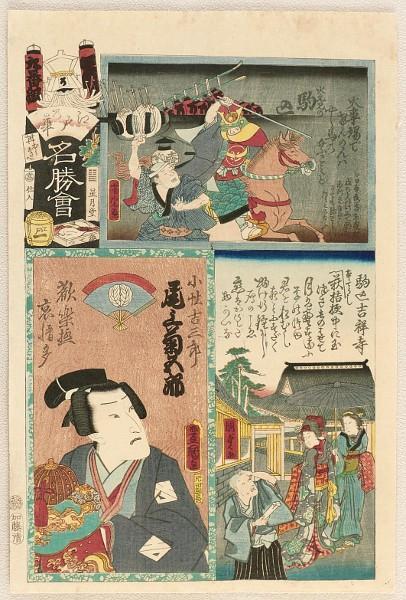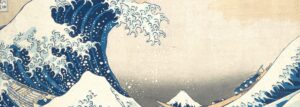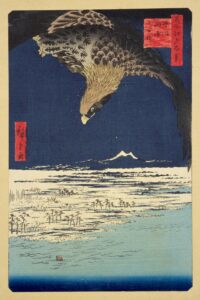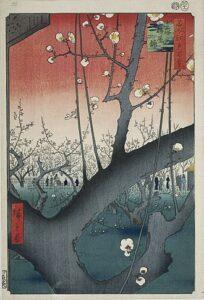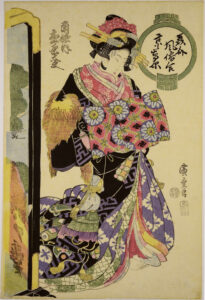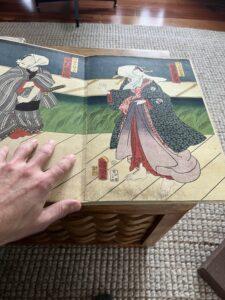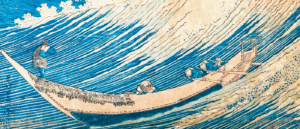Everyone likes a good play on words right? Well, you’d be surprised to know that the Japanese woodblock artists of the Edo period also felt the same! Filled with several landscape scenes, the series Flowers of Edo – Edo no Hana Meisho-e is full of text on each print that has a double meaning, one way or the other. As a matter of fact, even the title, Flowers of Edo was metaphorical in that it didn’t actually talk about just the mesmerizing landscapes of Edo. Still, it hinted at the fires that were rampant in Edo at the time and were affecting the environment. These fires are references in the Edo prints by the troop name, number, and emblem of the firemen on duty on display in the area [2], either in the title or the text within the prints. And these firemen were macho tattooed men who the public looked up to as a symbol of bravery – a counter for a taboo in Edo at the time i.e. tattoos [1]. Thus, the series’ fame can be attributed to the remarkable depiction of the anxiety that the people of the metropolitan Edo were living in owing to these fires [3].
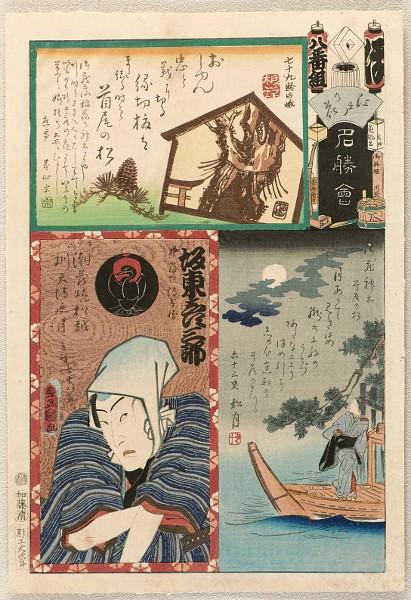
This doesn’t go to say that the series didn’t feature flowers. Because after all, Edo was known for the blossoming of several different kinds of flowers that characterized the land in spring. And this season is often attributed to people spending their time outdoors, with their families on a picnic. Thus, the landscapes have their own intricacies and depictions of these flowers of the Edo period [3].
And yet another interesting fact about the series is how it was not just the work of one artist, but a collaboration of 21 different names, one of which happened to be Utagawa Kunisada. Unfortunately, it was his death that lead to this series being halted. Owing to the fact that Kunisada was very committed to this series, this plethora of works is often attributed to him. And it wasn’t just 21 artists making different prints, even the same print had the works of more than one illustrator in them [4]. Thus, the series was produced in a format known as harimaze so to speak. To define it simply, this format has four main sections: a title section, an Image of the district (‘meisho’), a story of the district, and a kabuki actor related to the district. And not all prints fit on a single sheet, so this gives room for diptychs, triptychs, and even tetraptychs [4].
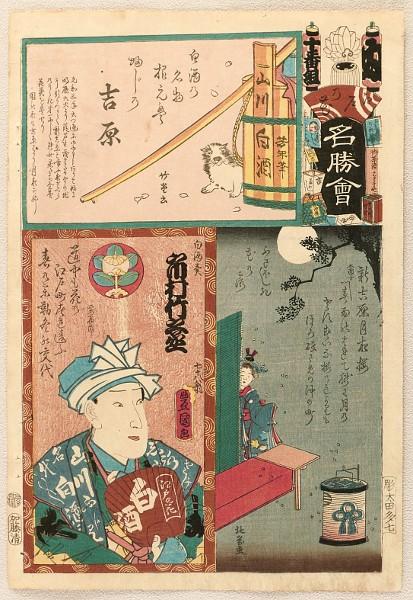
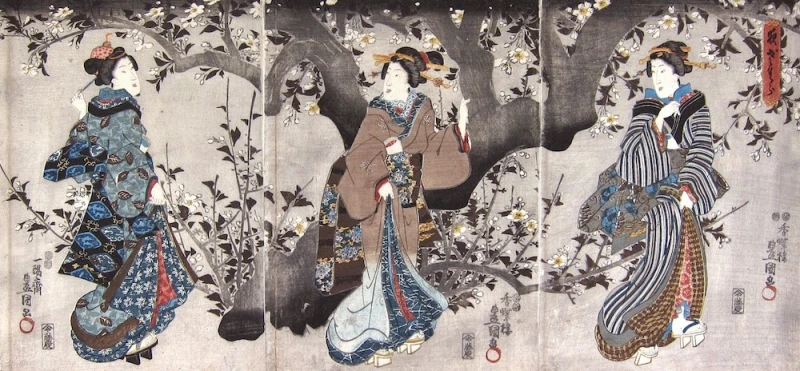
Thus, to say the least, this series of Japanese woodblock prints is a unique blend of color, meaning, and the true essence of ukiyo-e i.e the floating world of Edo period landscapes. A book has also been published on under the same title Flowers of Edo, featuring all these prints with their stories aligned alongside [4].
Overall, when you’re looking to buy a Japanese woodblock print, particularly one by Utagawa Kunisada, this series won’t disappoint you in the slightest!
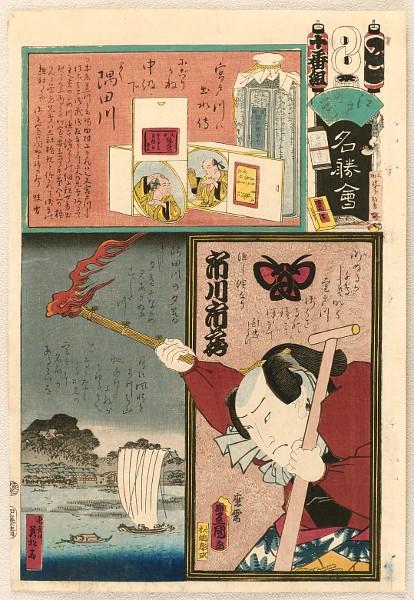
To buy an original woodblock print of your own, check out our current selection by clicking here.
Links
[1] “Flowers of Edo: A Collection of Famous Places by Utagawa Kunisada • Robyn Buntin of Honolulu Gallery”. 9 September 2013.
[2] Henry, S. The Flowers of Edo: Aspects of the Edo-no-Hana Meisho-e Japanese Woodblock Print Series. Sydney, Australia. 2010. P5.
[3] “The Flowers of Edo.” Toshidama Japanese Prints, 29 Aug. 2014, https://toshidama.wordpress.com/2014/08/29/the-flowers-of-edo/.
[4] Wanczura, Dieter. Flowers of Edo. No, Artelino GmbH, 20 Aug. 2022, https://www.artelino.com/articles/kunisada-flowers-of-edo.asp.

